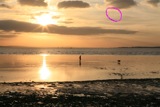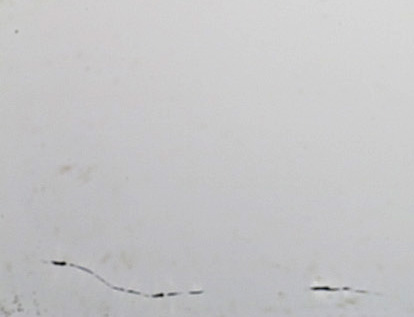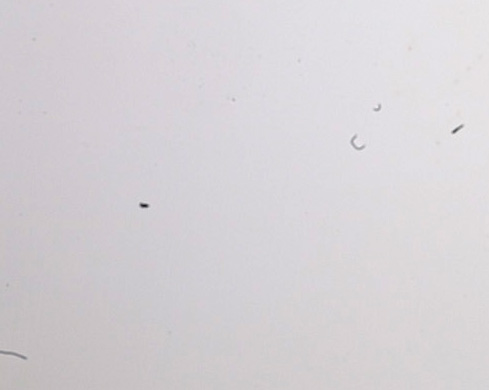 Click to enlarge image (124 Kb)
Click to enlarge image (124 Kb)After I'd taken about 700 photographs with my new Canon EOS 5D, I noticed dust on the sensor for the first time. There was an obvious hair. It didn't really matter on this picture as the composition was wrong anyway, but it was also present on subsequent images. It only showed up at apertures of f5.6 and above. It was easily removed by puffing air at the sensor.
So I've had no real problem with dust yet. On the other hand, I haven't taken photos in a smokey atmosphere or in a sand storm - and I rather think I shall try to avoid such situations.
Update November 2007: I wrote the above in 2005. Over the past two years I've changed my opinion somewhat.
Now, I don't think there's much point in blowing air at the sensor because, although it may shift the dust you were worried about, it almost always leaves some other dust somewhere on the sensor. I feel that blowing is just as likely to shift dust from elsewhere in the camera onto the sensor as it is to clear it.
I use the Arctic Butterfly to perform an initial clean. It works pretty well, provided the dust is not stuck on. If the Arctic Butterfly fails to shift a piece of dust then I use Eclipse Sensor Swabs moistened with Eclipse Cleaning Fluid (Photographic Solutions Inc).
Eclipse fluid contains methanol and seems to shift anything. However, there are dire warnings on a competitor's web site about methanol possibly damaging your sensor. I have not found this to be a problem (to date), but if you are worried about that then the competitor, VisibleDust, has similar swabs and different cleaning fluids. VisibleDust also makes a "corner swab" which is helpful to remove dust from the corners of the sensor, an area hard to deal with using the normal wider swabs.
Both makes of swab are pretty expensive (£3 each for the Eclipse ones in 2007). Sometimes, if there is oil on the sensor, it may take two or three swabs to get it clean. I have found I can reverse the Eclipse swabs, using a different area of the fabric, to make them do double duty. Of course, I don't actually touch the operative area of the fabric whilst reversing it, and never put the swab down anywhere where it can touch anything. I also blow air at the swab after reversing it. I don't use reversed swabs for the final clean.
To see dust on the sensor using a test photo, use aperture priority mode, set the smallest available aperture (eg. f22), set manual focus at infinity, point the camera at a nearby white wall, move the camera around whilst taking an exposure (to increase blurring of the background). Examine in Photoshop or equivalent, and use the LEVELS command to brighten the image and increase its contrast.
Here are two small crops from my sensor test photos:


I did get it clean in the end!
Two websites that give sensible advice on sensor cleaning are Bob Atkins and Cleaningdigitalcameras.com
Peter Facey, Winchester, England
20071115 updated
20051223 originated